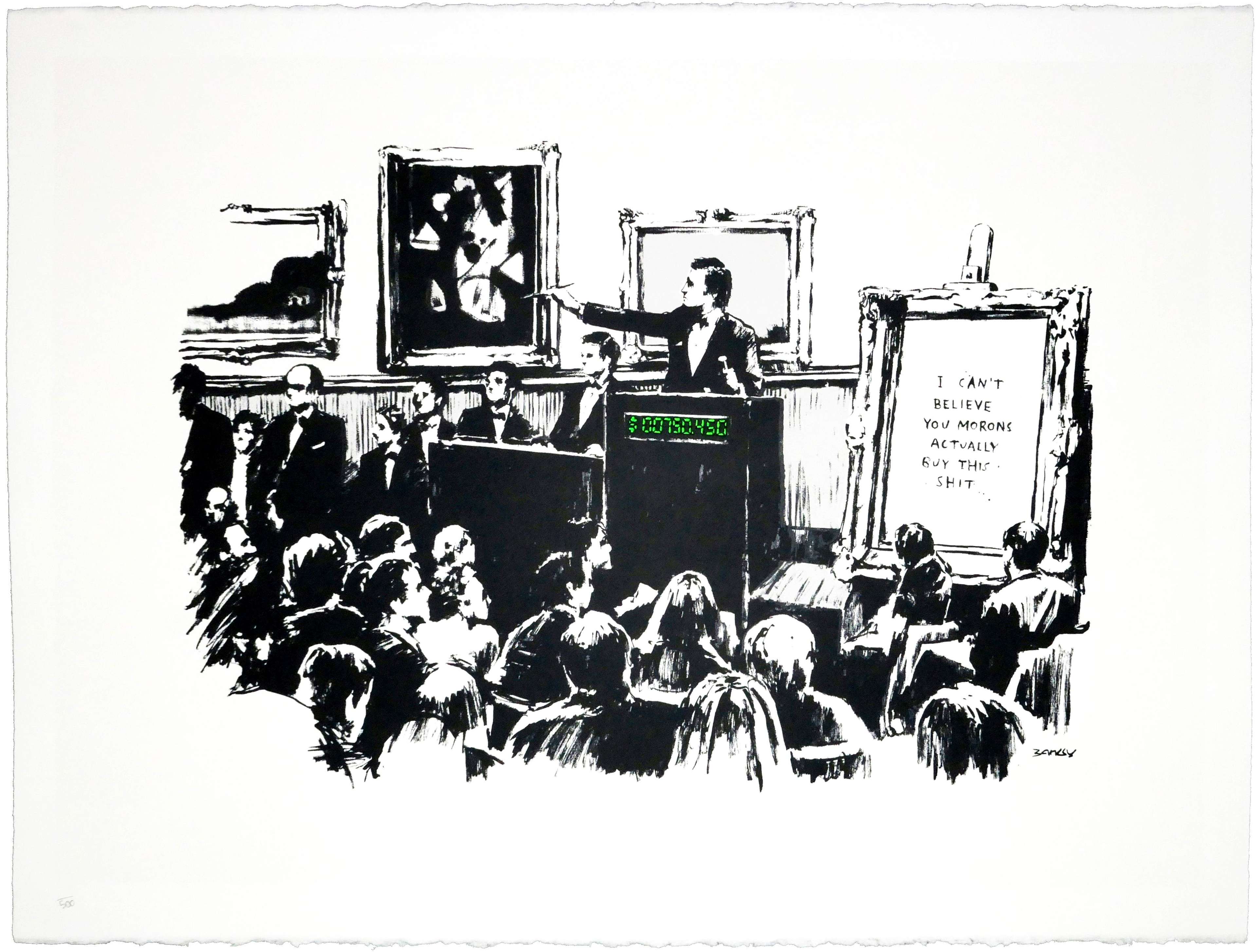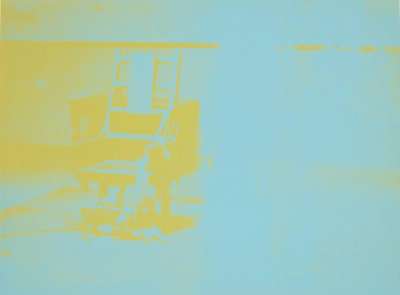 Untitled #15 © Louise Bourgeois 2005
Untitled #15 © Louise Bourgeois 2005Live TradingFloor
In the past decade, blockchain has emerged as a pivotal innovation, particularly in the realm of art authentication. This technology is not only reshaping how art is authenticated but also how it is owned and traded. While it has had a dynamic impact of blockchain in the art market, it has both its challenges – such as technical complexities and environmental concerns – and its opportunities, including enhanced transparency and the democratisation of art ownership. Ultimately blockchain is revolutionising the art world, bringing a new era of accessibility, security, and innovation.
NFTs and Digital Art: Redefining Ownership and Authenticity
The advent of Non-Fungible Tokens (NFTs) has brought a transformative shift to the digital art world, particularly in how ownership and authenticity are perceived and managed. NFTs, unique digital assets on the blockchain, enable a clear establishment of ownership for digital art, which traditionally faced challenges and scrutiny due to the ease of creating perfect copies. The uniqueness of NFTs provides a transparent history of ownership, ensuring that each piece's provenance is traceable and secure. NFTs have also revolutionised the transfer and sale of digital art, allowing for indisputable and fraud-resistant ownership records. They offer a verifiable digital certificate of authenticity, addressing the long-standing issue of authenticity in digital art. NFTs also empower artists by ensuring rights and royalties, enabling them to receive a share from secondary sales, a practice not common in the traditional art market. Additionally, they introduce the concept of digital scarcity, allowing artists to limit the number of copies of their work, thereby enhancing its value.
However, this innovative technology is not without its challenges and criticisms. Environmental concerns due to the energy consumption of blockchain technology, market volatility, and the debate over the artistic value versus speculative investment of NFT-backed digital art are significant issues. Despite these challenges, NFTs and digital art are reshaping the art market, offering new opportunities for digital creativity and collection. They represent a novel approach to monetising digital creations and securely owning and trading digital art, signalling a potential reshaping of the art market as the technology continues to evolve.
What is Blockchain?
Blockchain is a digital ledger technology that records transactions across multiple computers in a way that ensures security, transparency, and software decentralisation. Each block in the chain contains a number of transactions, and every time a new transaction occurs on the blockchain, a record of that transaction is added to every participant's ledger. The decentralised nature of blockchain makes it highly resistant to tampering and fraud, as altering any information would require modifying all blocks across the network. Originally developed for the digital currency Bitcoin, blockchain technology has since been adapted for various other applications, including smart contracts, supply chain management, and digital identity verification.
Blockchain in the Art World: A New Frontier for Provenance and Authenticity
While primarily known for its role in powering cryptocurrencies, Blockchain technology has emerged as a transformative force in the art world, especially regarding authentication, management and transactions of artworks. This digital ledger technology securely records transactions across a network of computers, making the data virtually immutable. In the art context, this feature is pivotal for creating digital certificates of authenticity, which provide a reliable method to verify the authenticity of artworks – an essential aspect in a market often plagued by forgeries.
One of the most significant applications of blockchain in art is its ability to offer a transparent and unalterable provenance record. Since the art world highly values the history and origin of artworks, blockchain's ability to track and display this information transparently enhances the trust and value in art transactions. Additionally, blockchain facilitates the use of smart contracts, self-executing contracts with the agreement terms directly written into code. These contracts automate and streamline processes like ownership transfer and payments, making art transactions more efficient and transparent.
In the realm of digital art, blockchain has given rise to Non-Fungible Tokens (NFTs), unique digital tokens that represent ownership and provenance of digital artworks. NFTs have created new markets for digital artists and collectors, allowing for the monetisation of digital art in ways previously not possible. However, the integration of blockchain in art is not without challenges: the art market on the blockchain, especially with NFTs, is known for its high volatility and speculative nature. Moreover, the legal and regulatory frameworks around blockchain in art are still in their infancy and evolving.
Case Study: Warhol, Maecenas and Successful Blockchain Authentication in the Art Market
Discussing case studies of successful blockchain authentication in the art market offers a concrete view of how this technology is being applied and impacting the industry. Maecenas, a blockchain platform dedicated to art investment, made headlines in 2018 with its innovative approach to art ownership. They offered fractional ownership of Andy Warhol's famous 1980 artwork, 14 Small Electric Chairs, leveraging the power of blockchain technology. This move represented a significant step in merging the art world with digital technology, particularly in how art is owned and invested in.
The implementation of this project was a pioneering effort in the art and blockchain space. Maecenas divided the ownership of the Warhol piece into digital shares, each represented by digital tokens on the blockchain, and interested investors could purchase these tokens – effectively buying a share of the artwork. The blockchain technology ensured that each share was recorded and verified, providing a transparent and immutable record of each investor's stake in the piece. This method of tokenisation turned a singular, high-value artwork into a divisible asset, where multiple investors could hold a stake. The use of blockchain not only made this process secure and transparent but also highly efficient, as transactions could be conducted online without the need for physical transfer of the artwork.
The impact of Maecenas's initiative with Warhol's artwork was multifaceted. By fractionalising the artwork into many shares, Maecenas opened up the opportunity for a broader range of investors to participate in the art market and democratised the field of art investment. This model broke down the financial barriers that typically limit art investment to wealthy individuals or institutions, allowing more people to own a piece of a high-value artwork. By allowing fractional ownership, Maecenas expanded the art market, attracting investors who might not have considered investing in art due to high entry costs. Furthermore, the liquidity of these digital shares was higher compared to traditional art ownership, where selling a piece can often be a lengthy and complex process.
This case study stands as a pioneering example of how blockchain can transform art ownership, showcasing blockchain's potential beyond just a tool for cryptocurrency, but also as a means to innovate how assets – particularly in the art world – are owned and traded.
Challenges and Opportunities in Implementing Blockchain for Art Authentication
Blockchain technology offers a novel approach to addressing long-standing issues in the art world, such as authentication, provenance and the efficiency of transactions. It empowers artists, collectors, and galleries, providing tools for secure and transparent dealings. As the technology continues to develop, it holds the potential to bring significant innovation and democratisation to the art market, although it must overcome certain environmental and regulatory challenges.
One significant hurdle is the technical complexity of blockchain, which can be daunting for artists, galleries and collectors unfamiliar with digital technologies. A digital divide exists, where not all potential users have the necessary access or technological literacy to engage with blockchain technology adequately, potentially limiting its reach. This complexity is compounded by environmental concerns, as most blockchain systems are energy-intensive, raising sustainability issues. Additionally, the regulatory landscape for blockchain and digital assets is still in flux, creating uncertainty around legal compliance and valuation – especially for digital art. Another challenge lies in the market volatility of blockchain assets like NFTs, which might deter traditional investors due to their unstable nature.
On the flip side, blockchain presents numerous opportunities – particularly in enhancing provenance tracking and transparency in art authentication, due to its immutable record of an artwork's history, which is invaluable. Globally, blockchain enables artists to reach an international audience, transcending the physical limitations of traditional art. It also opens up new revenue streams for artists, allowing them to earn royalties from secondary sales, a benefit rarely possible with conventional art transactions. Furthermore, blockchain facilitates the democratisation of art ownership through fractional ownership, making art investment more accessible to a wider audience. Lastly, it encourages innovation in art creation and distribution, paving the way for new digital and multimedia art forms.
While blockchain technology in art authentication presents various challenges, it also offers significant opportunities. As the technology evolves and becomes more user-friendly, its potential to reshape the art market is substantial, promising a more accessible, transparent and secure art world.





















